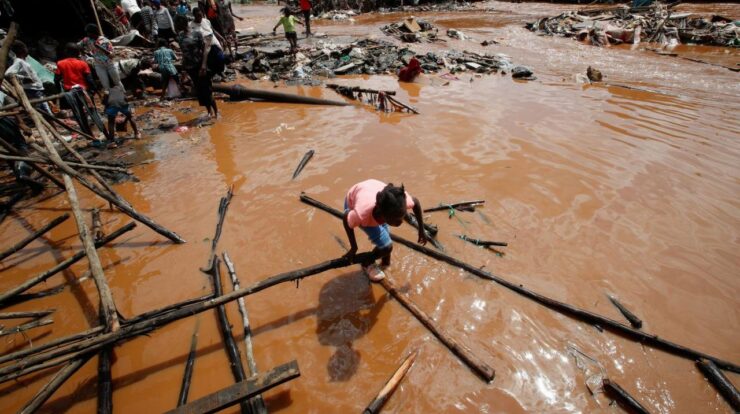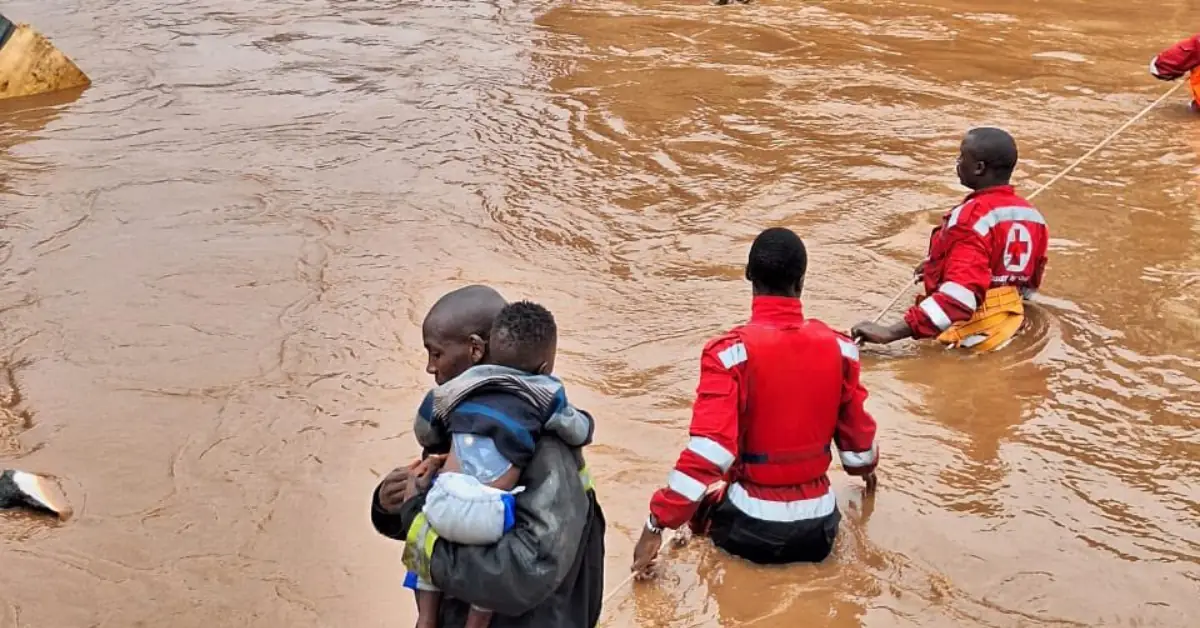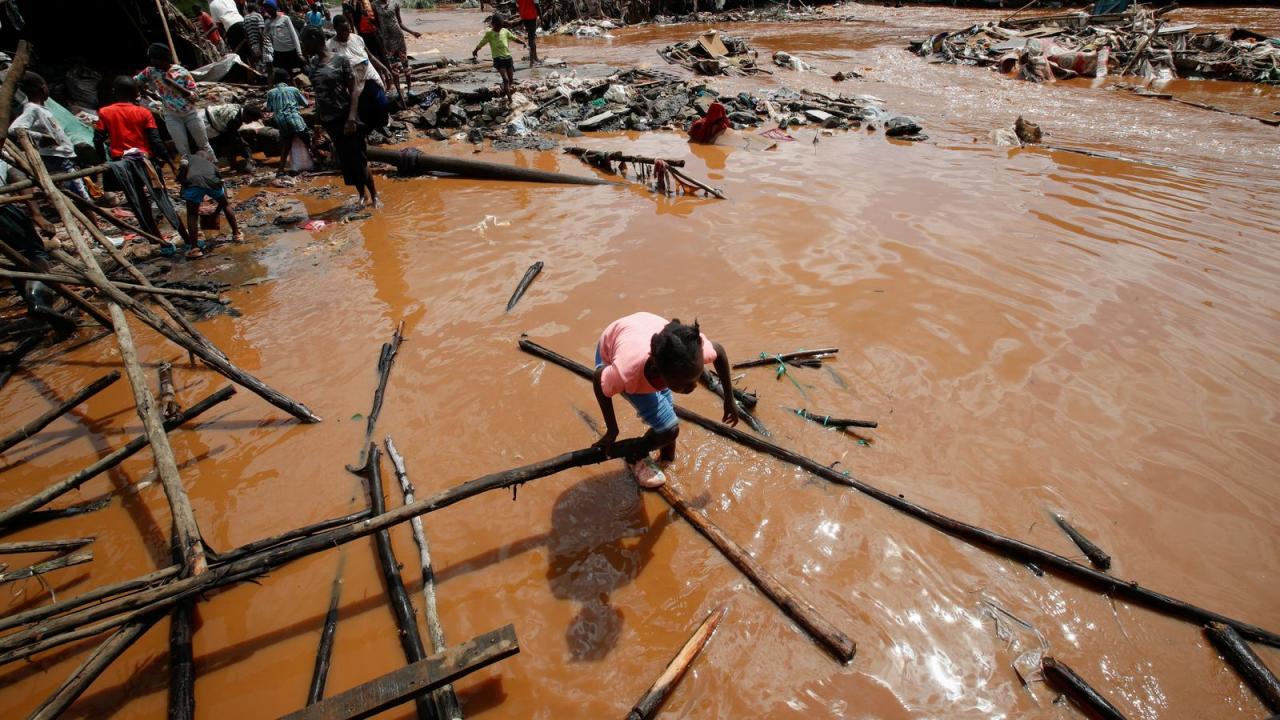
Kenya nairobi flooding – Kenya’s capital, Nairobi, has been hit hard by torrential rains, leading to widespread flooding that has caused significant damage to infrastructure, displaced thousands of people, and raised concerns about public health and the environment.
The relentless downpours have inundated roads, bridges, and other critical infrastructure, disrupting transportation and communication systems. Entire neighborhoods have been submerged, forcing residents to flee their homes and seek shelter in evacuation centers or with relatives.
Impact on Infrastructure

The relentless flooding in Nairobi has left a trail of destruction, severely damaging roads, bridges, and other vital infrastructure. Major roads have been rendered impassable, disrupting transportation and communication systems.
The flooding has washed away sections of roads, creating impassable craters and leaving vehicles stranded. Bridges have also been compromised, with some collapsing or sustaining significant damage. The disruption to transportation has crippled economic activity and hindered emergency services from reaching affected areas.
Specific Infrastructure Affected
- Thika Road: A major artery connecting Nairobi to the northern suburbs, Thika Road has been severely damaged, with multiple sections washed away.
- Ngong Road: Another key thoroughfare, Ngong Road has been partially submerged, forcing vehicles to navigate treacherous waters.
- Nairobi Expressway: The recently constructed expressway has not been spared, with flooding causing damage to its surface and support structures.
- Moi International Airport: The main airport in Nairobi has been affected by flooding, with runways and terminals experiencing waterlogging.
Humanitarian Crisis
The flooding has displaced thousands of people from their homes, leaving them stranded and in dire need of assistance. Families have been forced to abandon their belongings and seek shelter in temporary camps or with relatives.
Displaced families face numerous challenges, including lack of food, water, and adequate shelter. Sanitation and hygiene conditions are poor, increasing the risk of disease outbreaks. The elderly, children, and individuals with disabilities are particularly vulnerable.
Stories of Affected Individuals
- Amina Mohammed, a single mother of three, lost her home in a flooded slum. She and her children are now living in a crowded camp, struggling to get by.
- John Mwangi, a construction worker, was injured when his house collapsed during the flooding. He is now receiving medical attention at a local hospital.
- Sarah Njeri, an elderly woman, was rescued from her flooded home by neighbors. She is now staying with her granddaughter, but they are both struggling to make ends meet.
Environmental Impact
The flooding has had a devastating impact on the environment, causing widespread pollution and damaging ecosystems. Sewage and hazardous materials have been washed into rivers and streams, contaminating water sources and posing health risks.
Wildlife habitats have been flooded, displacing animals and disrupting the delicate balance of the ecosystem. Trees and vegetation have been uprooted, further exacerbating erosion and reducing biodiversity.
Data on Environmental Impact, Kenya nairobi flooding
- According to the National Environment Management Authority (NEMA), over 100,000 liters of sewage have been discharged into Nairobi River.
- The flooding has affected over 50 acres of the Nairobi National Park, a key wildlife sanctuary.
- Air quality has deteriorated due to the release of pollutants from flooded areas, posing respiratory health risks.
Economic Consequences

The flooding has had a significant impact on the economy of Nairobi. Businesses have been forced to close, leading to job losses and income reduction. Supply chains have been disrupted, and the tourism industry has suffered heavy losses.
The damage to infrastructure and property has also resulted in substantial economic costs. The government has estimated the economic impact of the flooding to be in the billions of shillings.
Statistics on Economic Impact
- Over 500 businesses have been closed due to flooding, resulting in the loss of over 10,000 jobs.
- The tourism industry has lost an estimated $10 million in revenue due to the cancellation of bookings and travel restrictions.
- The cost of repairing damaged infrastructure is estimated to be over $500 million.
Summary
As the floodwaters recede, the full extent of the damage becomes apparent, and the challenges of recovery loom large. The government and international aid organizations are working to provide assistance to those affected, but much work remains to be done to rebuild infrastructure, restore essential services, and address the long-term environmental and economic consequences of this devastating event.
Essential Questionnaire: Kenya Nairobi Flooding
What caused the flooding in Nairobi?
The flooding was caused by unusually heavy rainfall over several days, which overwhelmed the city’s drainage systems.
How many people have been affected by the flooding?
Tens of thousands of people have been affected by the flooding, with many displaced from their homes.
What is the government doing to help those affected by the flooding?
The government has deployed emergency response teams to provide assistance to those affected by the flooding, including food, water, and shelter.
